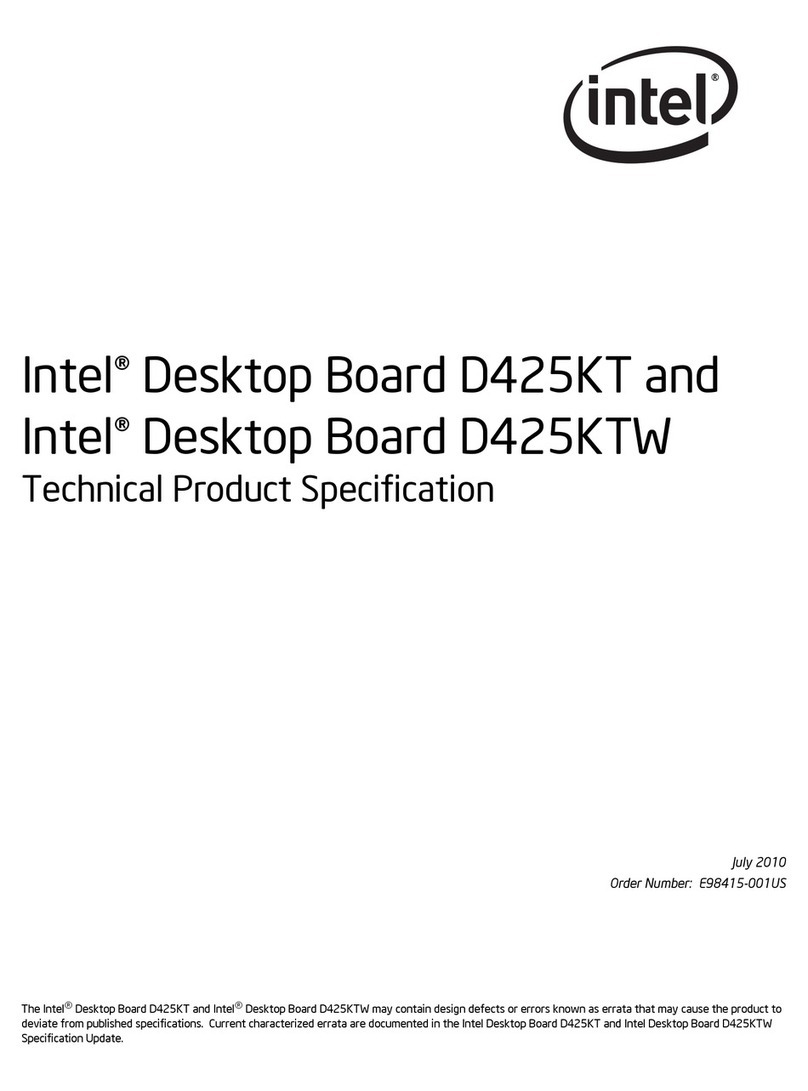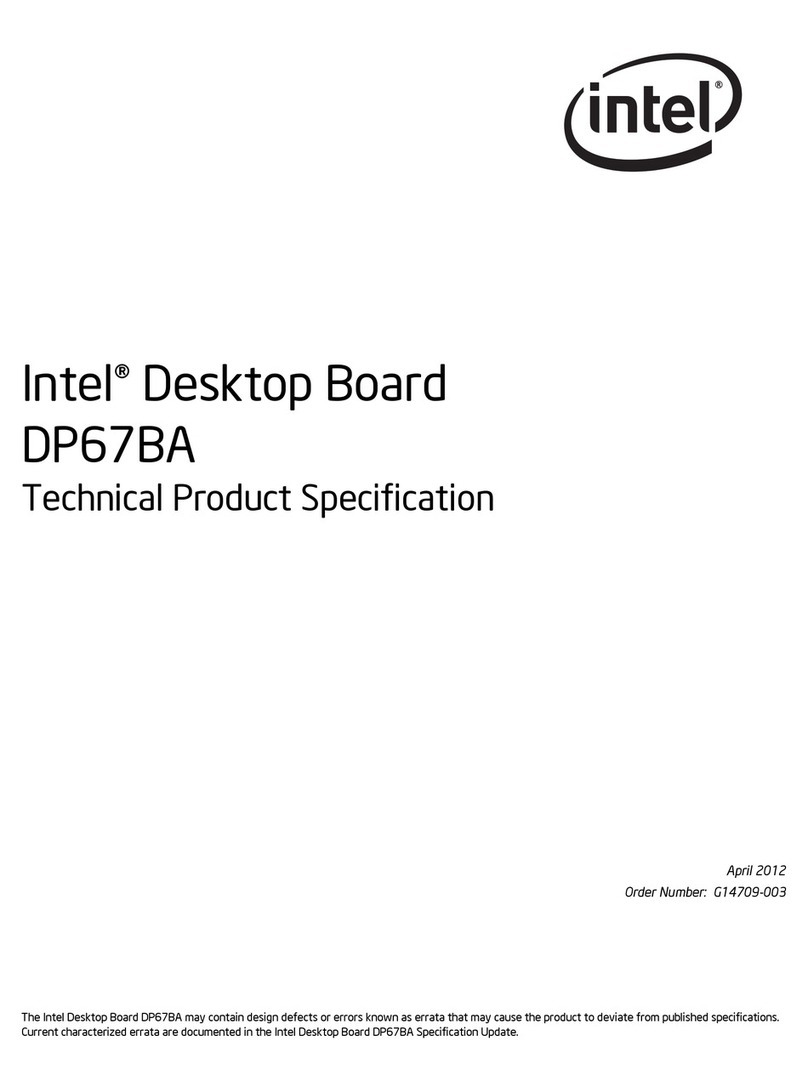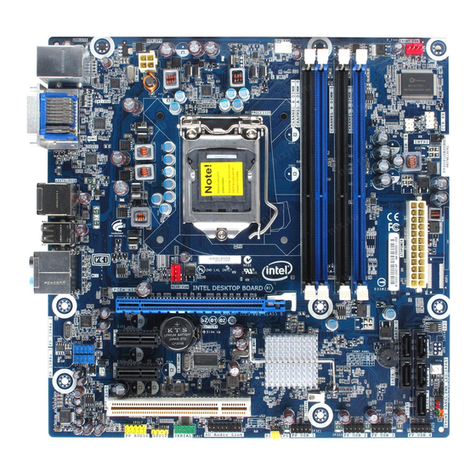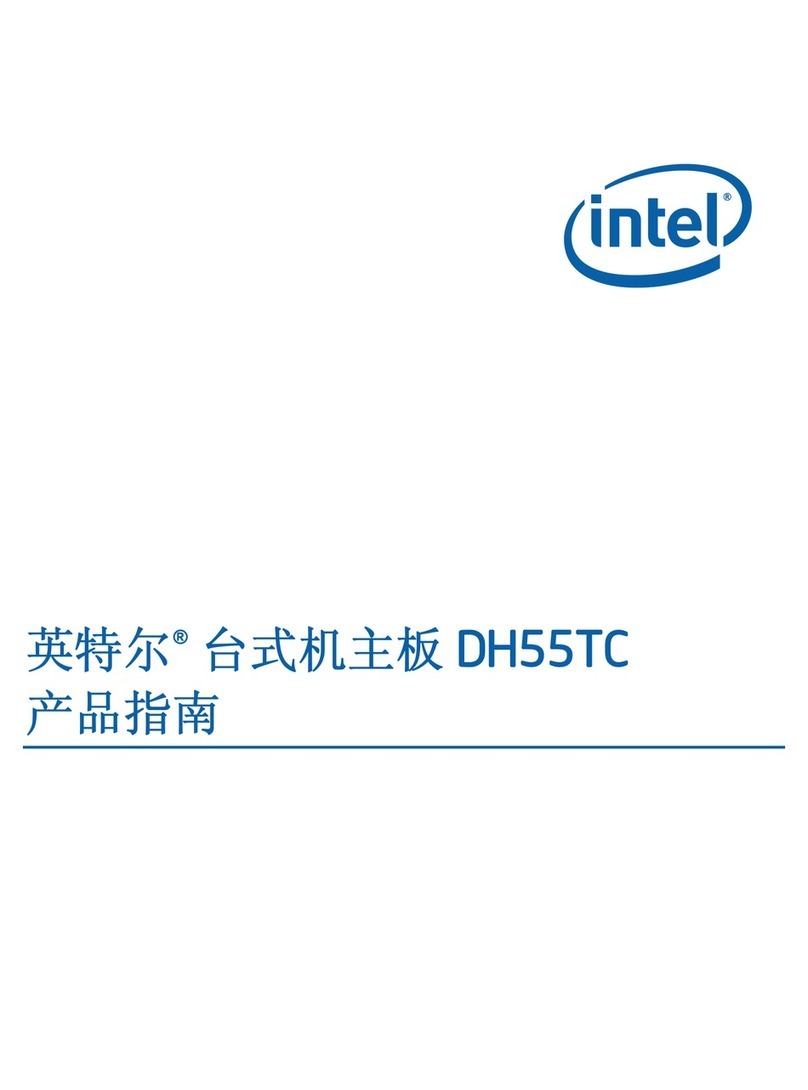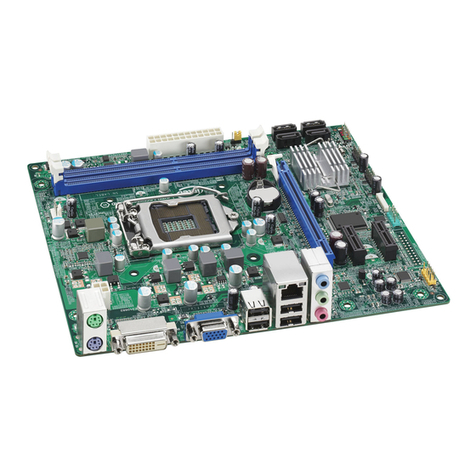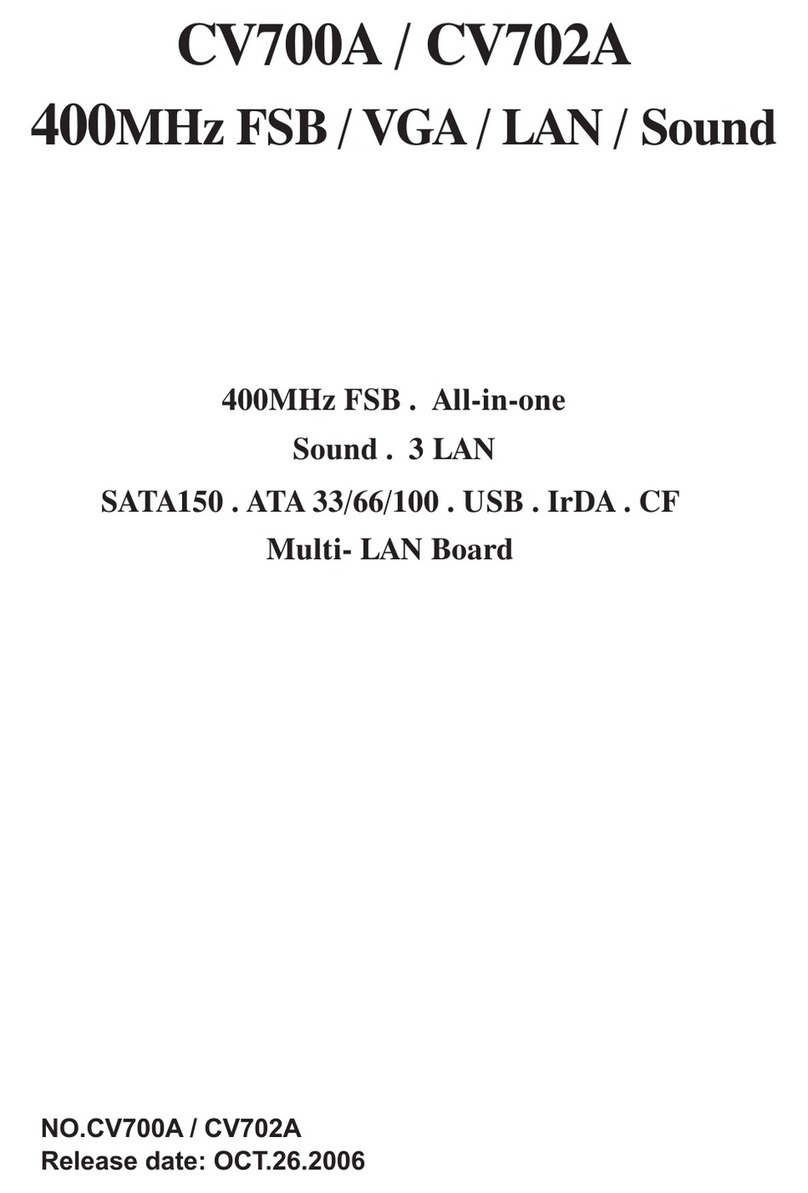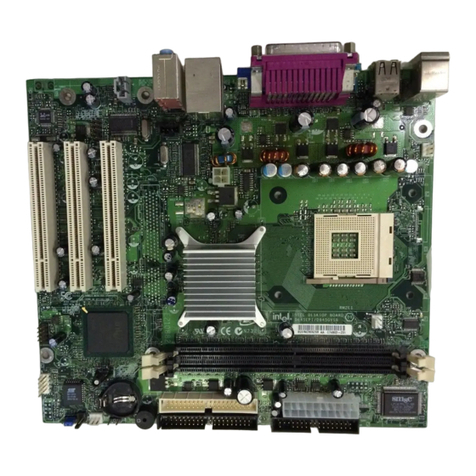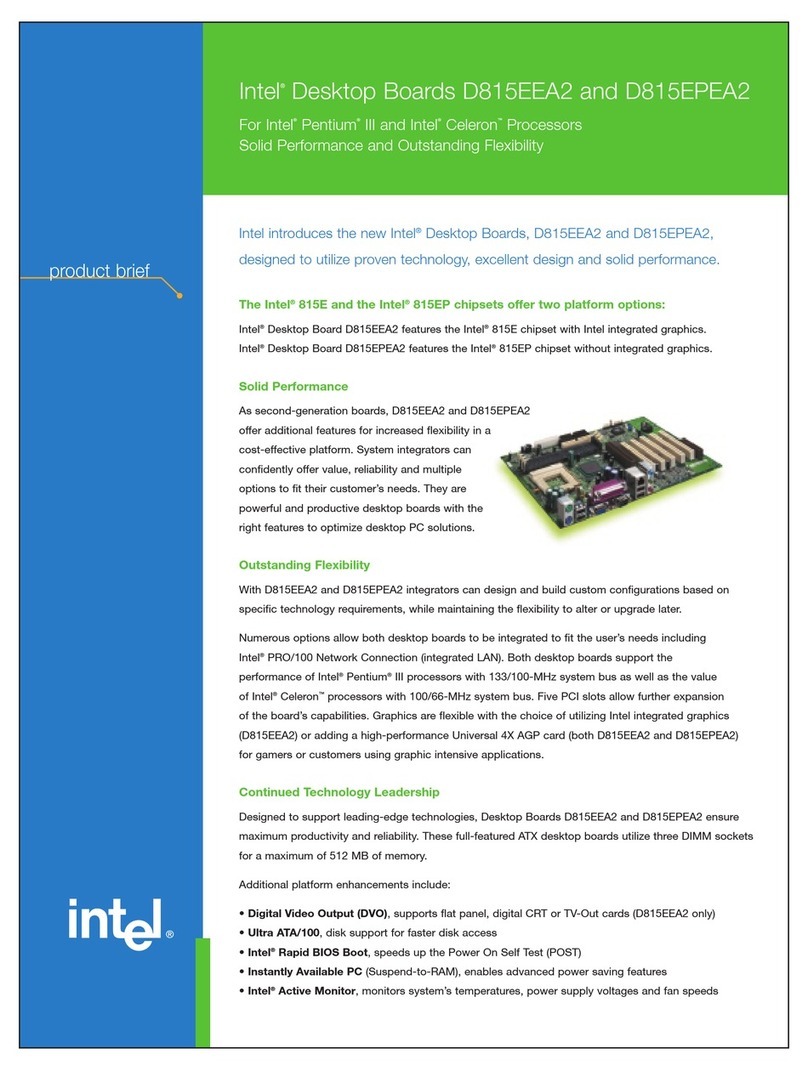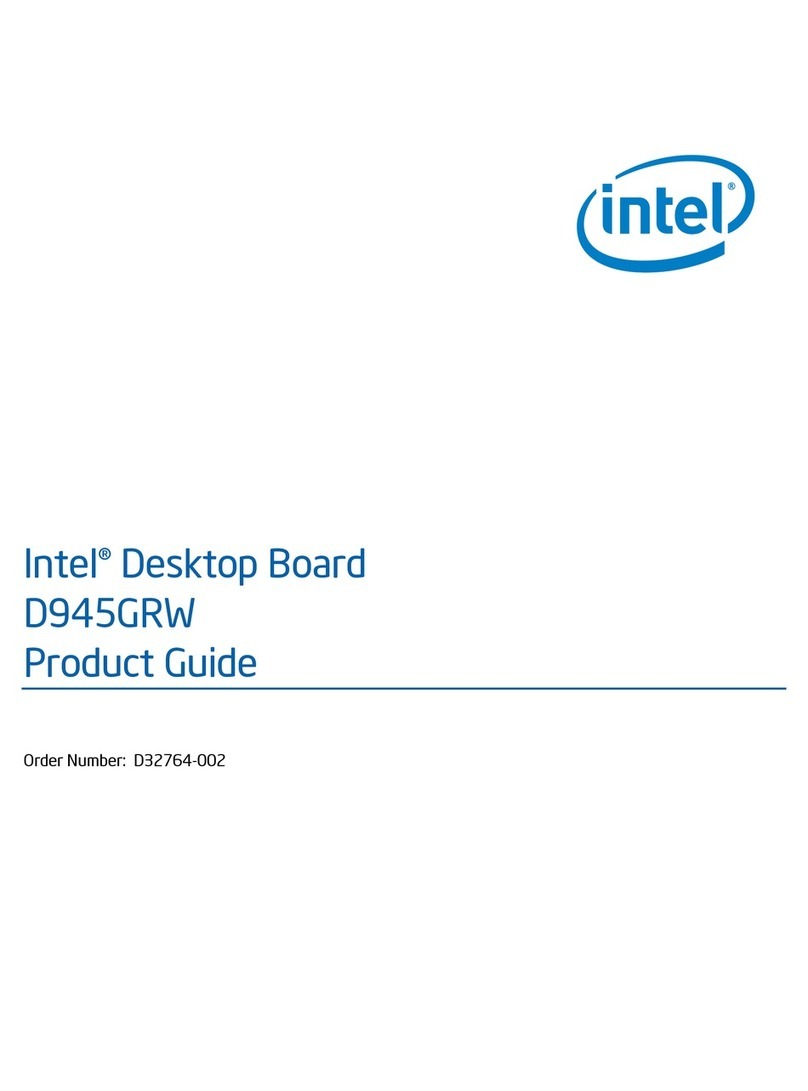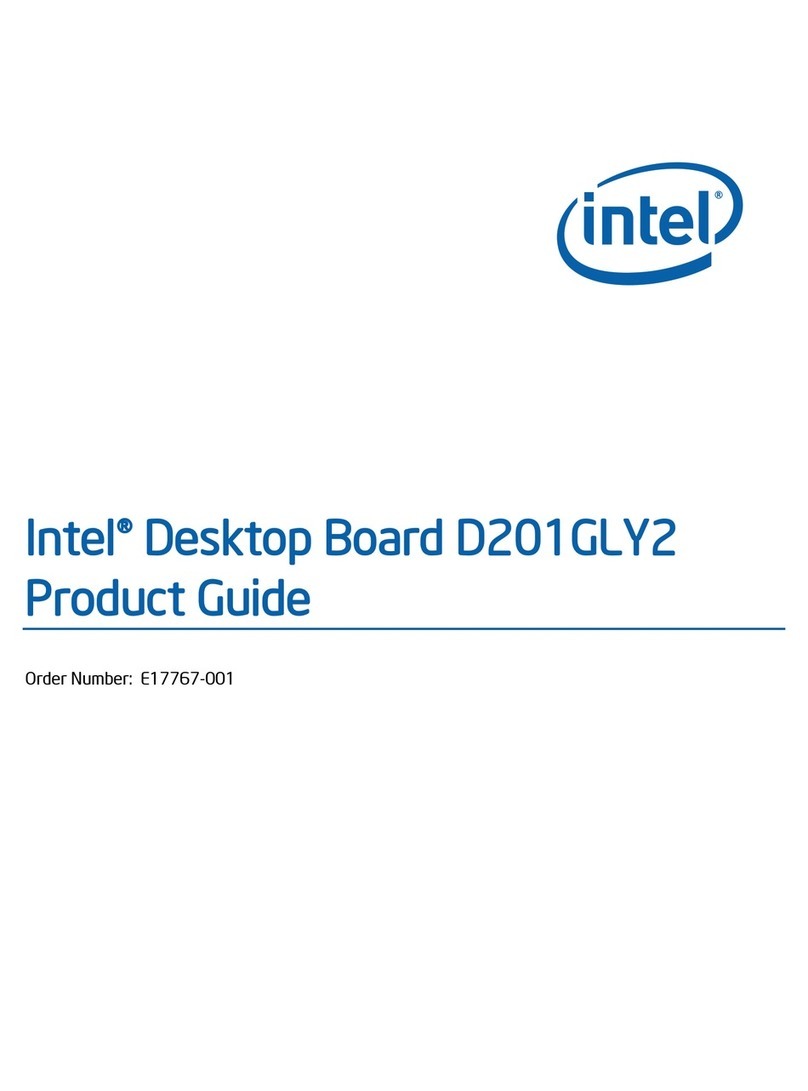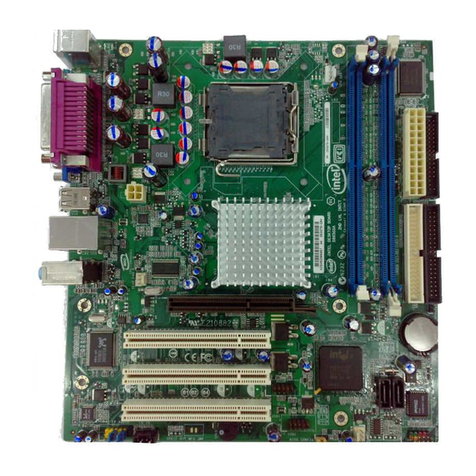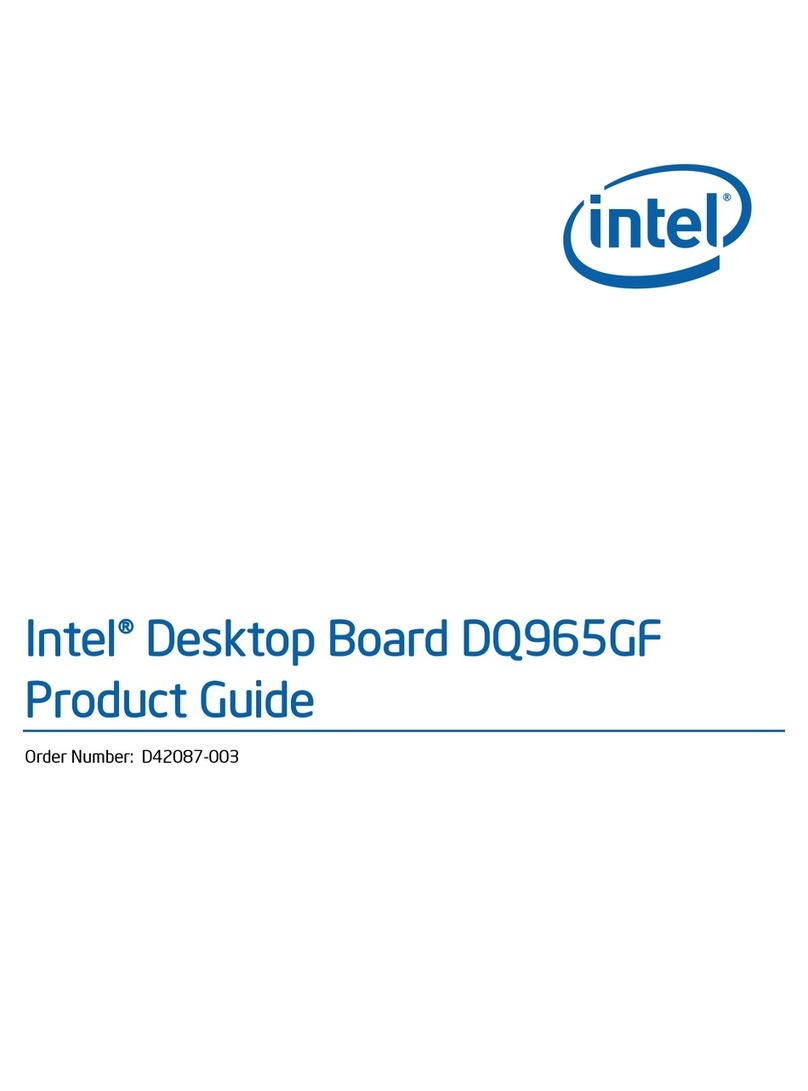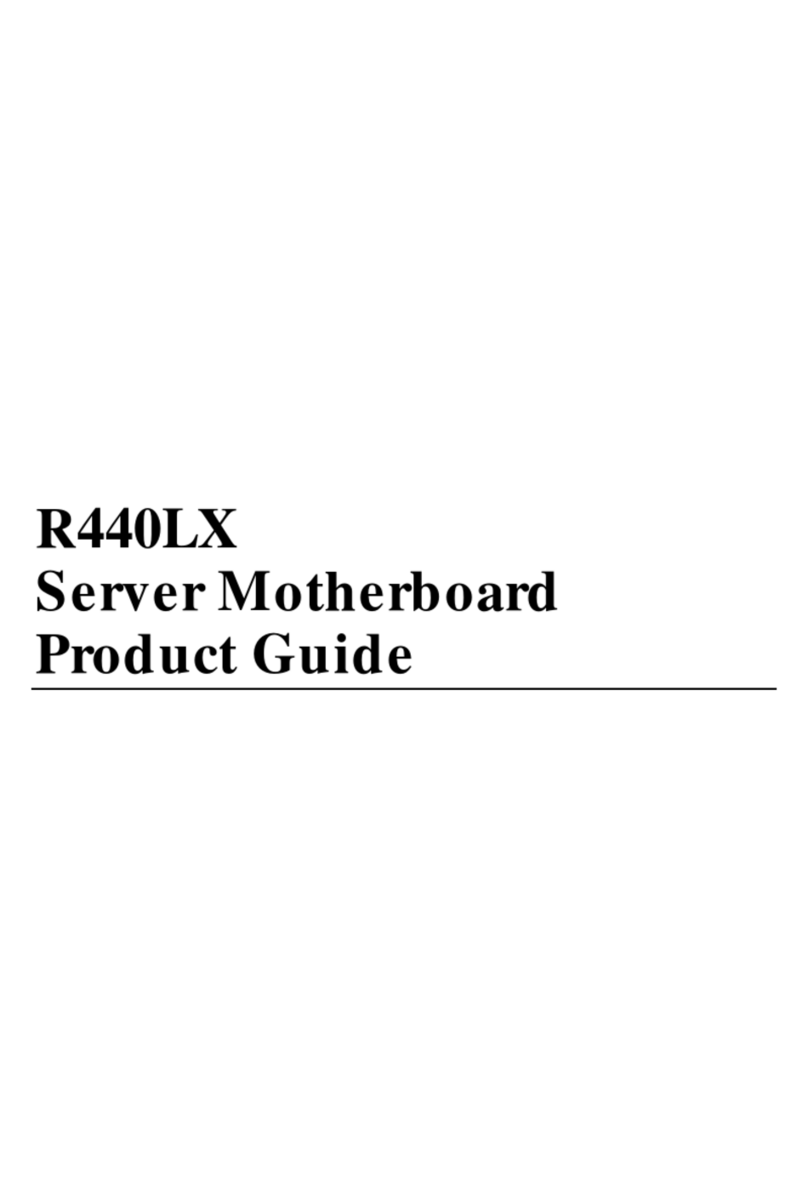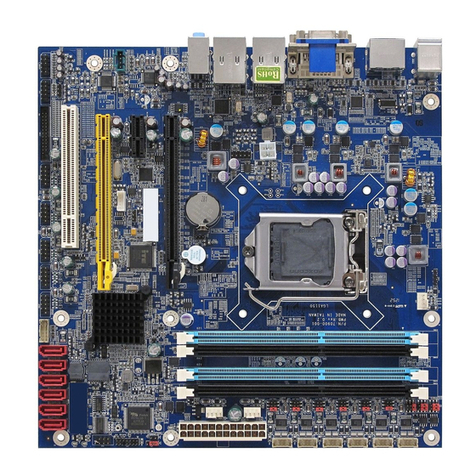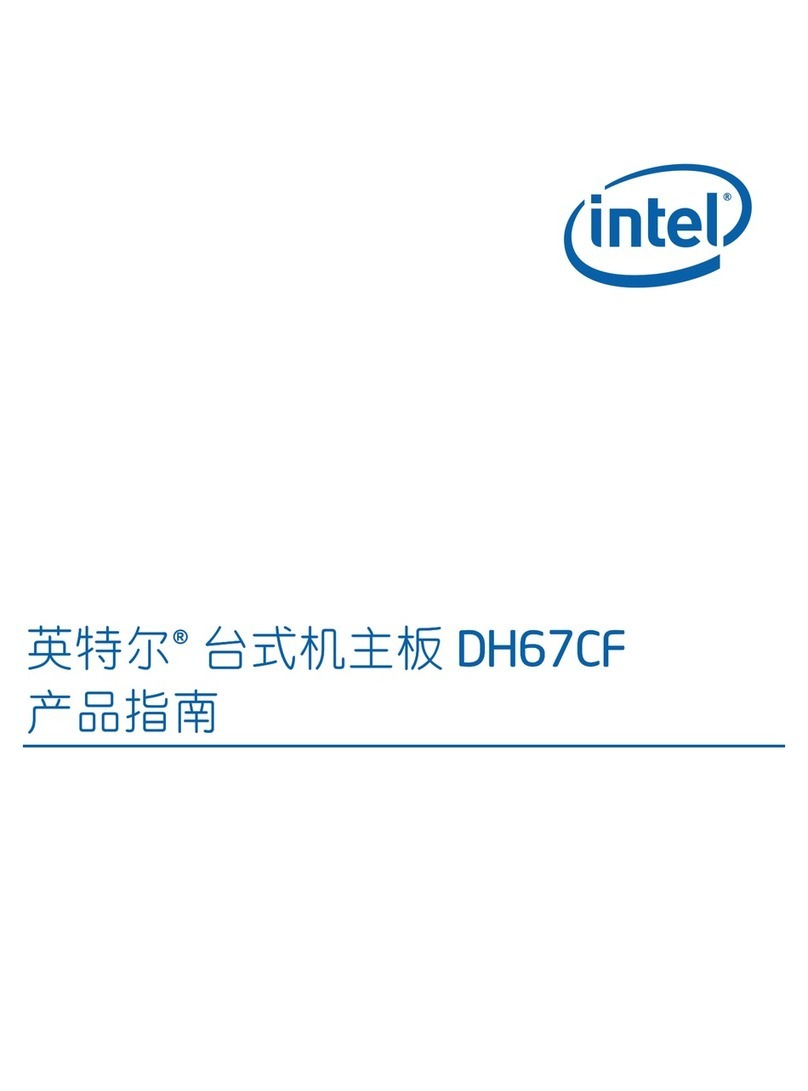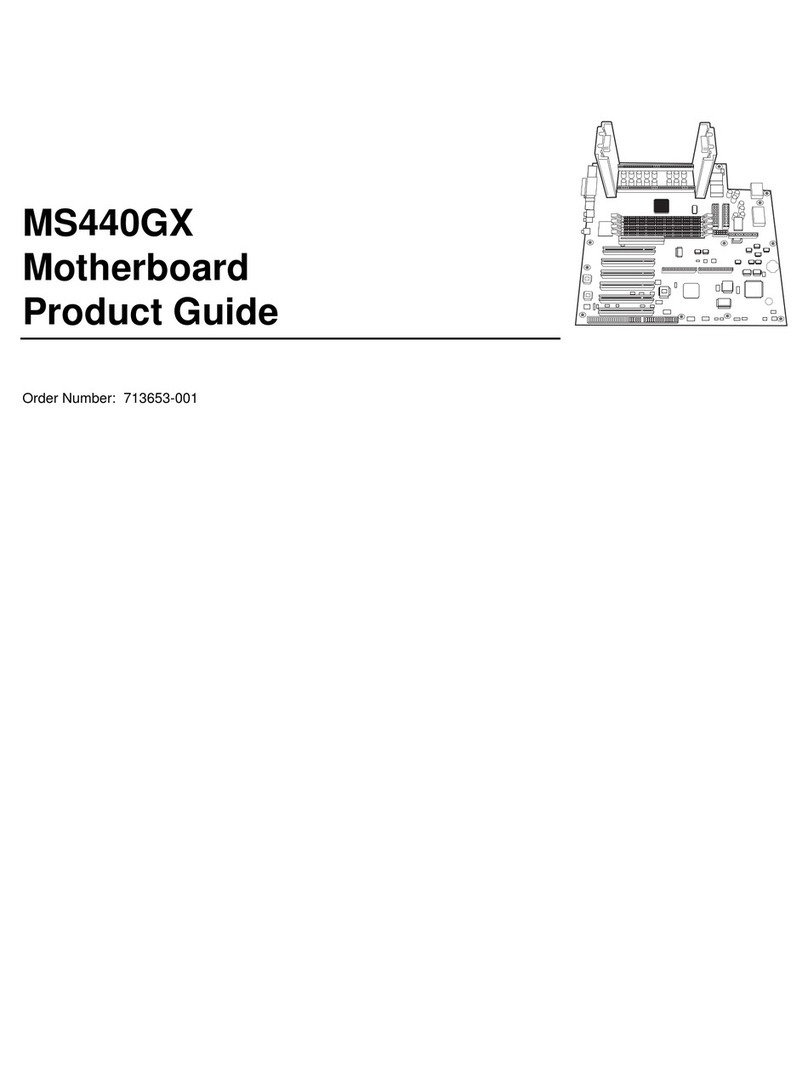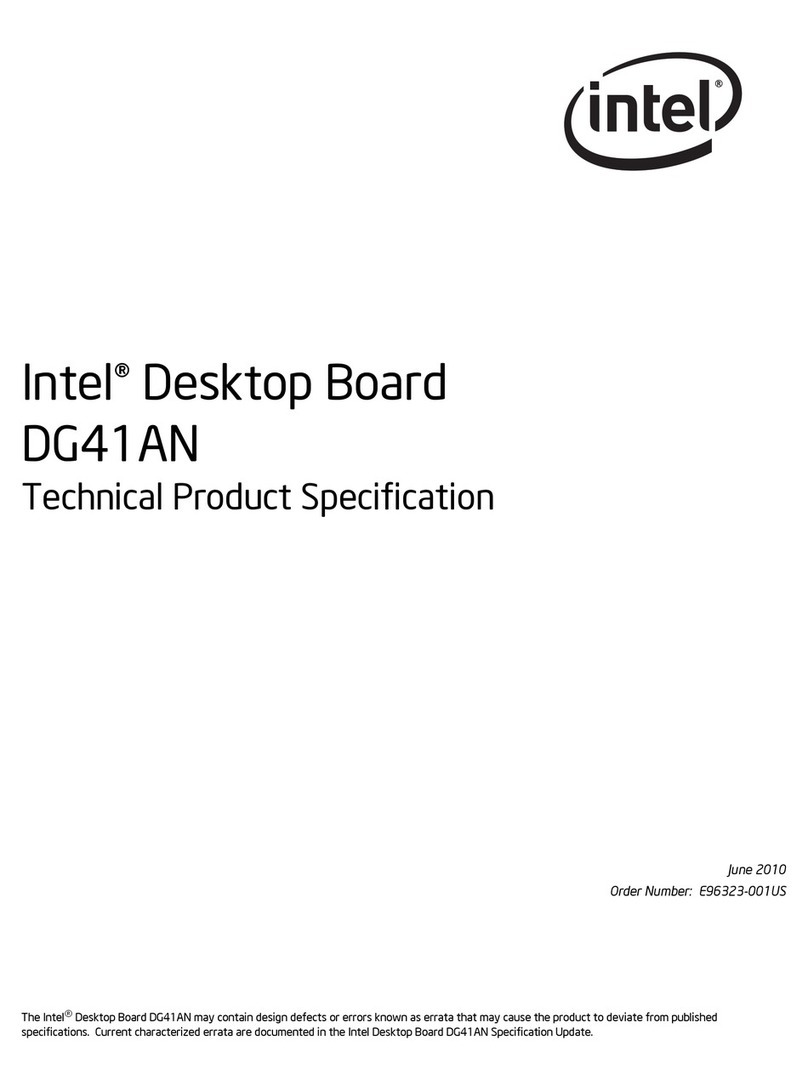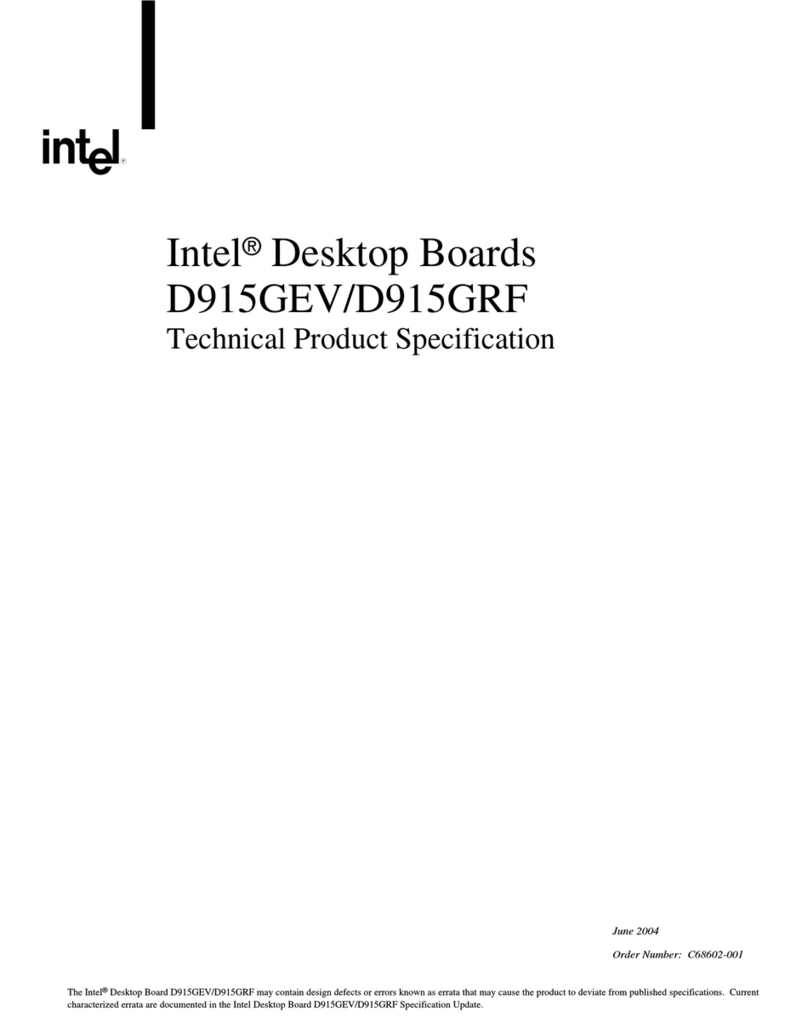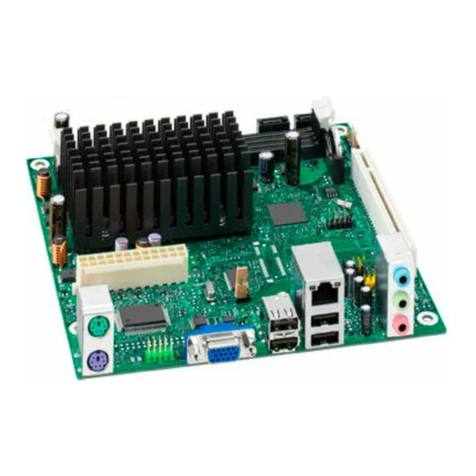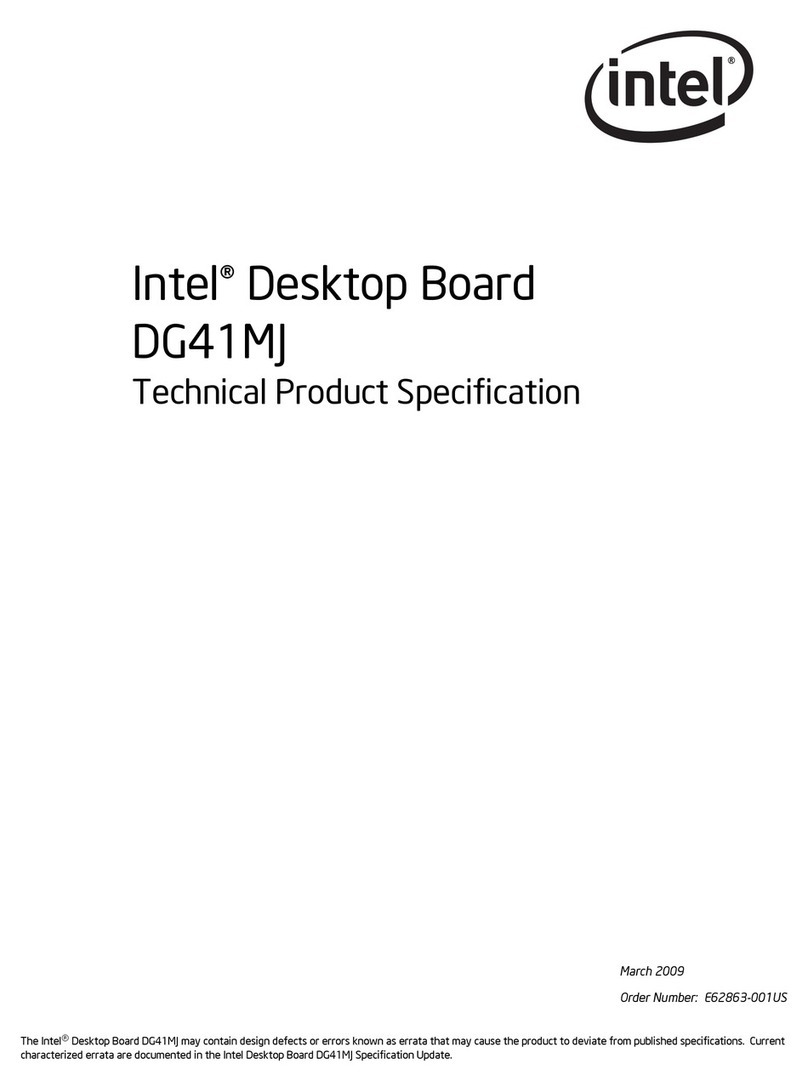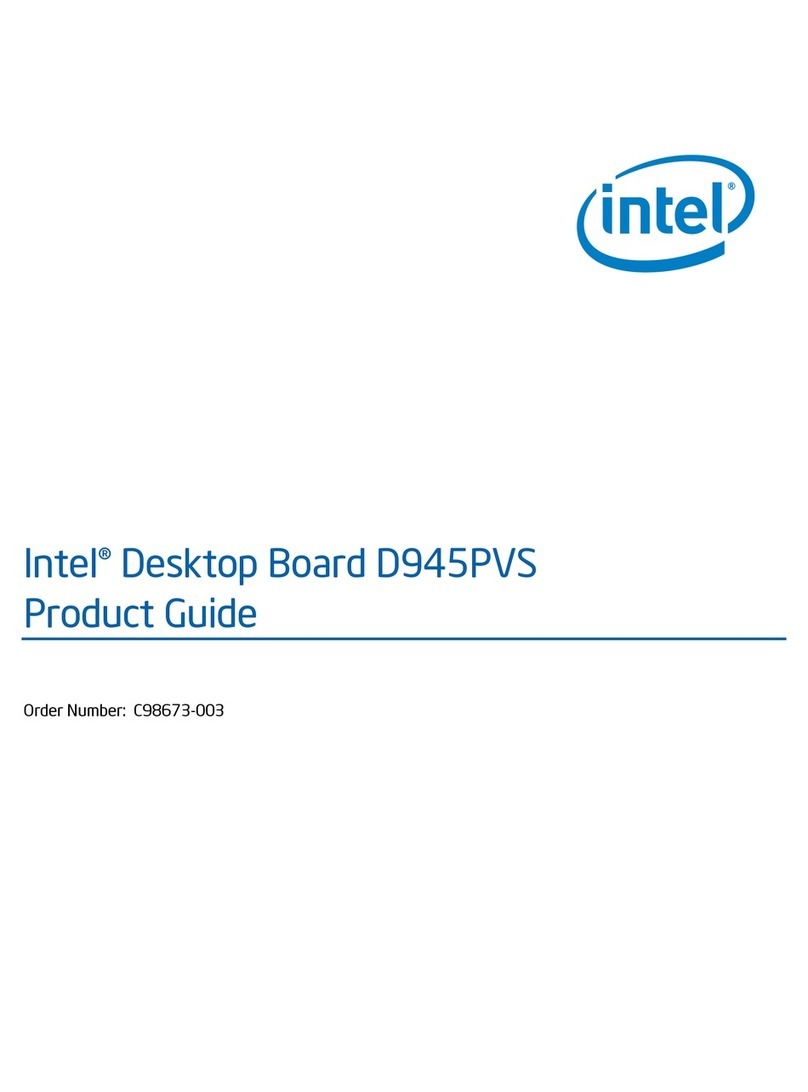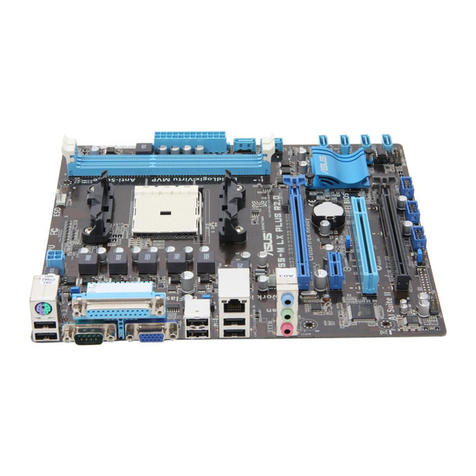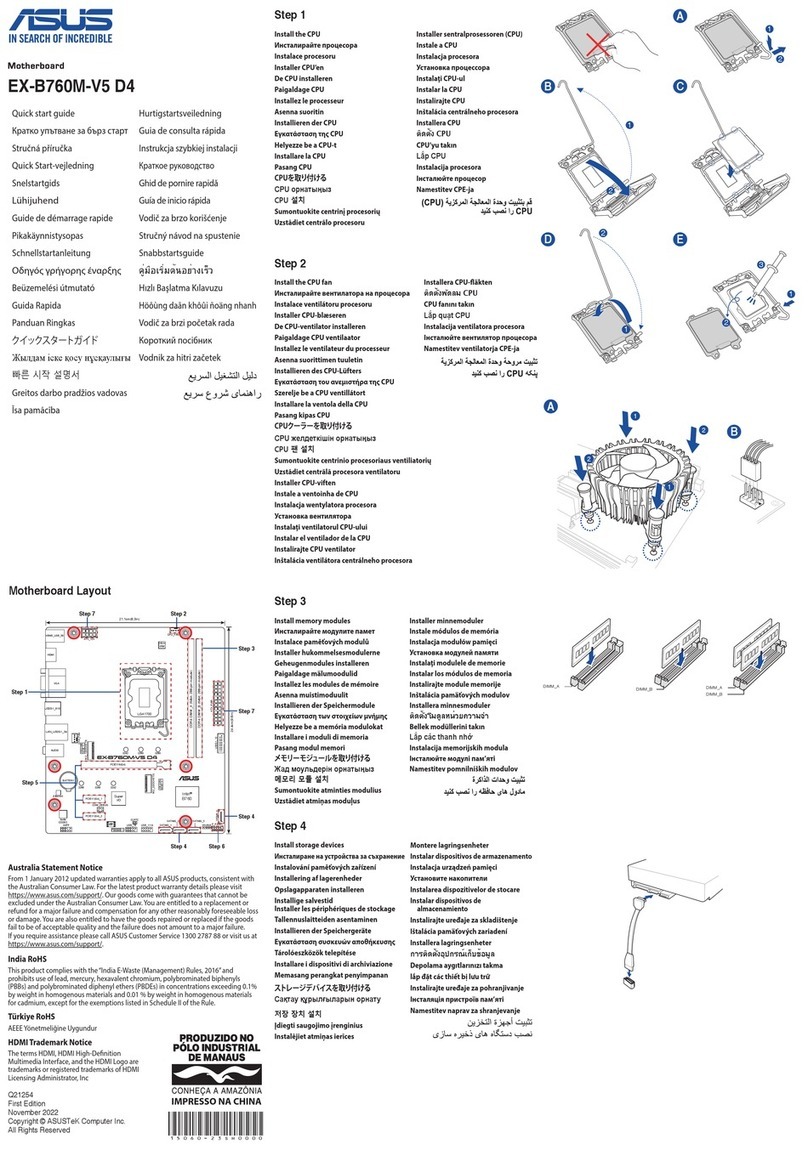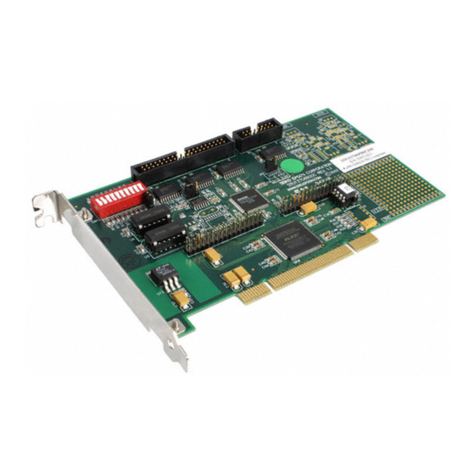
Intel Desktop Board DH87RL Technical Product Specification
viii
2Technical Reference
2.1 Memory Resources ........................................................................... 39
2.1.1 Addressable Memory.............................................................. 39
2.2 Connectors and Headers.................................................................... 40
2.2.1 Back Panel Connectors........................................................... 41
2.2.2 Component-side Connectors and Headers................................. 42
2.3 BIOS Security Jumper....................................................................... 53
2.4 Mechanical Considerations................................................................. 55
2.4.1 Form Factor.......................................................................... 55
2.5 Electrical Considerations.................................................................... 56
2.5.1 Power Supply Considerations .................................................. 56
2.5.2 Fan Header Current Capability ................................................ 57
2.5.3 Add-in Board Considerations................................................... 57
2.6 Thermal Considerations..................................................................... 57
2.7 Reliability ........................................................................................ 60
2.8 Environmental.................................................................................. 60
3Overview of BIOS Features
3.1 Introduction..................................................................................... 61
3.2 BIOS Flash Memory Organization........................................................ 62
3.3 Resource Configuration ..................................................................... 63
3.3.1 PCI Express Autoconfiguration ................................................ 63
3.4 System Management BIOS (SMBIOS) ................................................. 63
3.5 Legacy USB Support ......................................................................... 63
3.6 BIOS Updates .................................................................................. 64
3.6.1 Language Support................................................................. 64
3.6.2 Custom Splash Screen ........................................................... 65
3.7 BIOS Recovery................................................................................. 65
3.8 Boot Options.................................................................................... 66
3.8.1 Optical Drive Boot ................................................................. 66
3.8.2 Network Boot........................................................................ 66
3.8.3 Booting Without Attached Devices ........................................... 66
3.8.4 Changing the Default Boot Device During POST......................... 66
3.9 Adjusting Boot Speed........................................................................ 67
3.9.1 Peripheral Selection and Configuration..................................... 67
3.9.2 BIOS Boot Optimizations........................................................ 67
3.9.3 Power Button Menu ............................................................... 68
3.10 Hard Disk Drive Password Security Feature.......................................... 68
3.11 BIOS Security Features ..................................................................... 69
3.12 BIOS Performance Features ............................................................... 71
4BIOS Error Codes and Messages
4.1 BIOS Error Codes ............................................................................. 73
4.1.1 BIOS Beep Codes.................................................................. 73
4.1.2 Front-panel Power LED Blink Codes ......................................... 74
4.2 BIOS Error Messages ........................................................................ 74
